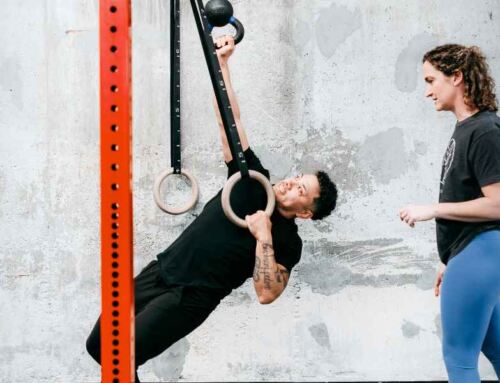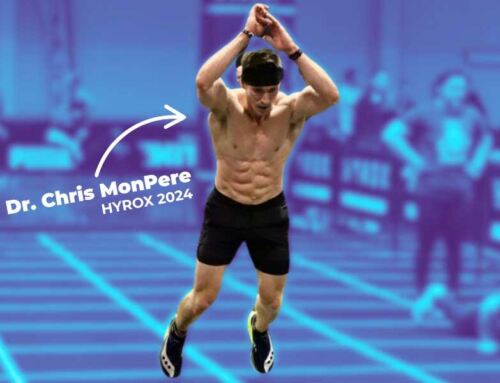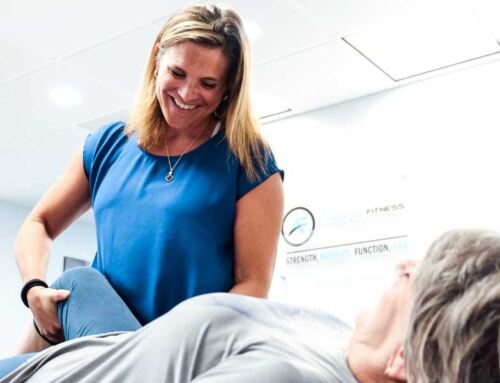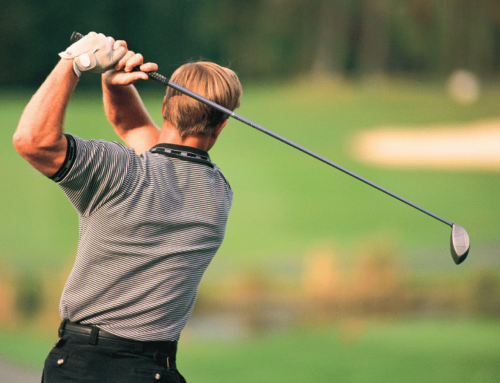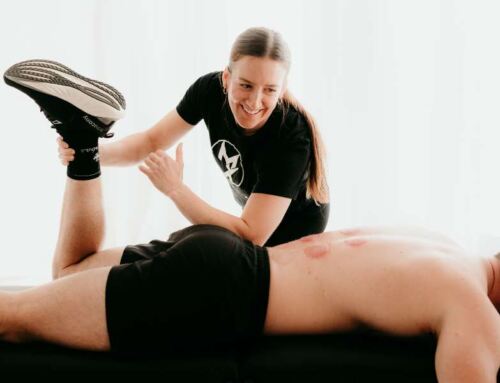Better Backs, Stronger Shoulders
As a physical therapist and upper extremity fellow, I have spent countless hours working in the “shoulder pain trenches,” scraping and clawing to help get patients out of the hole and back to stable ground.
During this time, I have found that the role of the scapula has been widely studied as it relates to shoulder health (or the absence thereof).
Many of these studies highlight the impact of a poorly functioning scapula on shoulder pain, due in large part to the scapula’s role as the base upon which the shoulder and arm functions…

Armed (see what I did there) with this knowledge of shoulder “sickness,” what if we take a proactive approach to the scapula/back in training and our daily movement practices to move towards the fitness end of the spectrum?
When I think about optimizing the fitness potential for the upper body, I always have the back at the forefront of my thinking!
***Disclaimer – I am using “scapula” and “back” interchangeably. As you can see from the above image, many of the major back muscles have portions of their attachments along the borders of the scapula.
What 5 pillars are important in shoulder & upper body health?
With regards to upper body fitness, we will focus on the five following pillars in this article:
- Mobility – the ability to move your body freely and easily, through as large a range of motion as possible
- Stability – demonstrating body control through the motions in the mobility section (especially in end ranges)
- Strength – the capacity to generate force through large ranges of motions
- Power – the rate at which work is done; or trying to simultaneously maximize speed and force production
- Endurance – the ability to sustain your activity
1. Mobility
Mobility is a prerequisite to the other four pillars, as you cannot demonstrate proficiency in a movement or position that you cannot physically achieve. As such, mobility comes first. Keep in mind, mobility is a dish best served with frequency and variety. Channel your inner child and move! Here are two examples to express mobility in the upper body:
Prescription: We have discussed in previous blog posts the “20/20 principle.” Every 20 minutes, take a 20 second break from your workstation to move. If you follow this approach, the body will adapt. The body adapts to the movements we perform most frequently.
2. Stability
Stability is of utmost importance to the shoulder, as it is structurally built for mobility. The shoulder joint is a ball and socket joint—meaning it moves in every which way. A joint that is very mobile sacrifices some structural stability.
As a result, we must be purposeful with training stability of the shoulder, especially at the extreme positions of the joint (i.e. fully overhead and arms behind the body). Start training stability in the following four key positions by increasing the time in each position or the weight you must control in each position:
Prescription: Start with 5 rounds of 10 seconds work with 50 seconds of rest. Increase stability demands through longer sets or increased weight.
3. Strength
Back/shoulder strength is a topic near and dear to my heart. Take a look at this previous blog post, where I dive into more specifics of pulling and pushing strength.
4. Power
Power is the ultimate expression of your upper body fitness, as it requires the marriage of speed and strength.
For reference, maximum power is expressed at 1/3 to 1/2 of maximal strength and is typically trained with resistance just slightly heavier than that. We can train for power with any of the movements discussed in the strength blog, but I will highlight the ski erg exercise, as it tracks power production for you (Watts measurement).
Prescription: Power training = sets of low reps with generous breaks (2:00-5:00). 6 x 20 seconds maximal effort ski erg. Rest 2:00 between each set.
5. Endurance
Endurance can be trained through long duration bouts of exercise (i.e. hop on the rower for a 5000 m row) or repeated intervals. Both approaches have been validated to improve our maximal endurance. When it comes to back endurance, try the ring row exercise:
Prescription: 3 x 15 seconds maximum reps. Rest 45 seconds between each set.
The Take Home
Train your back and improve your shoulder health! Take a balanced approach by training each of the 5 pillars of fitness in your weekly routine. If you need help, come train with me!
References
- Ellenbecker, et al. Current Concepts of Orthopedic Physical Therapy: The Shoulder. 4th edition – 2016
- Reinold, M. Clinical Examination of the Shoulder Joint Complex (2015)
- Kibler, WB. Understanding Scapular Dyskinesis. ASSET 2018
- Kibler WB, Ludewig PM, McClure PW, Michener LA, Bak K, Sciascia AD. Clinical implications of scapular dyskinesis in shoulder injury: The 2013 consensus statement from the ‘scapular summit’. Br J Sports Med. 2013;47:877-476 885.
- Ludewig PM, Reynolds JF. The association of scapular kinematics and glenohumeral joint pathologies. J Orthop Sports Phys Ther. 2009;39(2):90-104
- Greenfield B. Beyond Training: Mastering Endurance, Health, and Life. 2014.
- Tsatsouline P. The Quick and the Dead. 2019.
About the Author
Dr. Dan Alcorn is a physical therapist with MovementX in Northern Virginia. He is a Board-Certified Specialist in Orthopedic Physical Therapy and is also fellowship-trained in the care for upper extremity athletes. Dan Alcorn treats patients at Patriot CrossFit in Arlington, VA, and has a strong passion for improving people’s confidence through healthier movement, lifestyle choices, and longevity.



